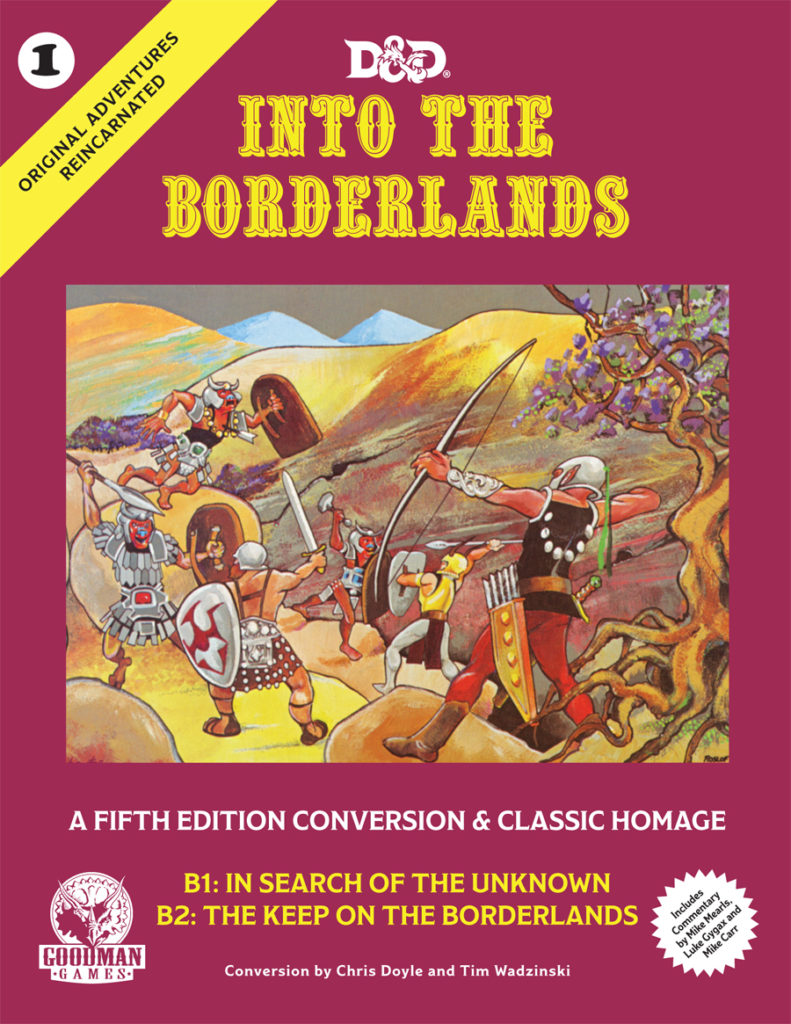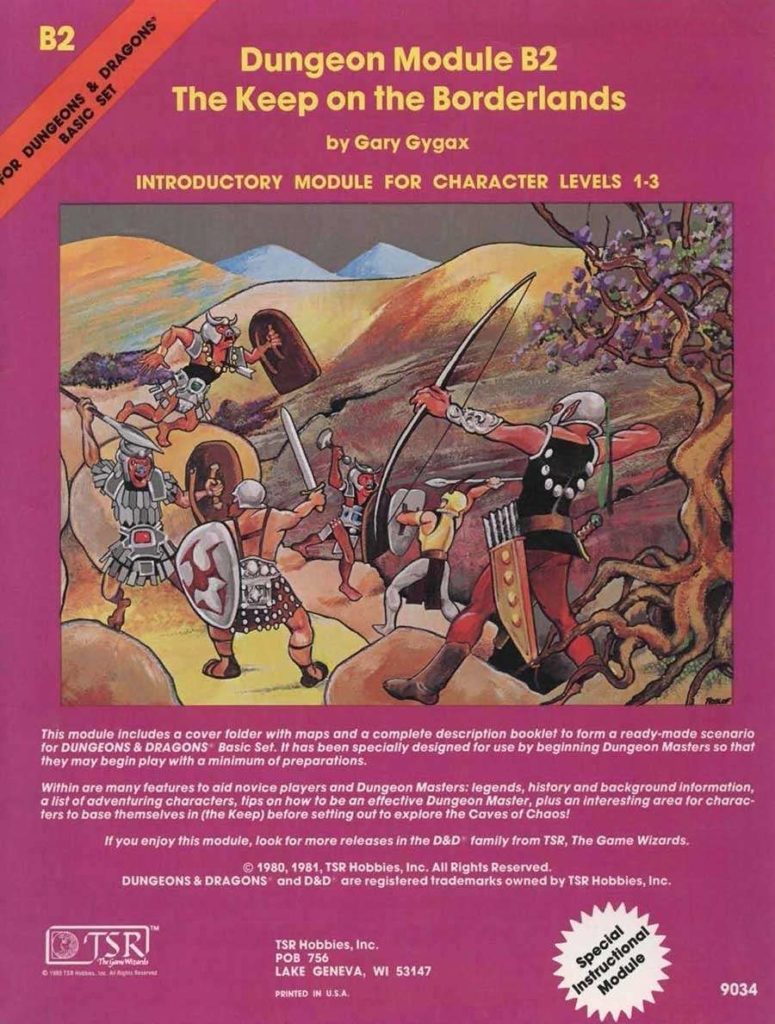In my A Game Per Year project, my goal has been to read one roleplaying game corebook for every year they’ve been published. However, I soon started to feel that it was hard to decipher how the games were really meant to be played. For this reason, I decided to start a parallel project, An Adventure Per Year, to read one roleplaying adventure for each year they’ve been published.

For 1979, I’m deviating a little from the usual format of this project. I try to read everything in the original editions to get a sense of how roleplaying games developed over the years.
However, Goodman Games has published a book called Into the Borderlands which collects two classic D&D adventures from 1979, In Search of the Unknown and The Keep on the Borderlands. The book updates the adventures for the 5th edition of D&D but also contains reprints of the original versions. Not once but twice for each, because there were different printings and they had minor differences.
Because of this, the book was a strange read: it had three versions of both adventures (two reprints and the 5th edition conversion) plus some extra encounters, mini adventures and so on.
The two adventures have been placed in the same world, with the dungeon from In Search of the Unknown included in the map of The Keep on the Borderlands. There are also some new story connections between the two adventures.
These two adventures, In Search of the Unknown and The Keep on the Borderlands, have a classic status for a couple different reasons. They are some of the earliest ever published for D&D and they showcase simple, foundational design ideas. Most importantly, at various times both were the default adventure you got when you bought the basic D&D boxed set. This means that for a generation of players, these were the first adventures they tried.
This also makes the adventures obvious candidates for reissue. Lots of people have nostalgic memories about them. However, when D&D landed in Finland, there were not the adventures we had available in translation, so I chose to read them now because people refer to them so often in game design discussions. I figured I better know what people talk about!

In Search of the Unknown is a pretty basic dungeon, filled with traps. It has a simple backstory involving two adventurers who built a dungeon as a base for themselves and then died.
The detail that everybody always notes about this adventure is that it’s rooms have descriptions but placement of monsters and treasure is left to the DM. The adventure is explicitly a teaching tool, meant to help starting Dungeon Masters learn their craft.
However, what struck me were the traps. Trap design is an art with a lot of development and effort through the history of roleplaying game design, after all.
One trap consist of two identical rooms. Once the characters enter one, they’re teleported to the other without realizing. This way, once they continue their adventure, their mapping is confused.
This is of course connected to the idea that the players draw the map at the gaming table as the DM describes the rooms and corridors of the dungeon.
Another trap consists of a series of magical pools. The characters can drink from each, and they have various interesting effects. This creates chaos, and that can be fun. It’s a simple expression of a dungeon feature that’s designed not so much to damage the characters or cause hardship but rather just to introduce an element of chance.

The Keep on the Borderlands is a campaign setting in miniature. It has a town (the titular Keep) where characters can buy stuff, rest and talk to people. It has a small wilderness area with encounters and finally a dungeon, The Caves of Chaos. If we’re using the 5th edition conversion, it also has the dungeon of In Search of the Unknown.
In its basic setup, The Keep on the Borderlands is classic D&D in a pure form. You’re a bunch of adventurers who come from civilization. Your job is to go to a cave where people of the wrong race live, exterminate them and take their stuff.
Nowadays this basic setup gets prettified with more justifications for why the adventurers do what they do. Perhaps the goblins ambushed travelers, as in the 5e adventure Lost Mine of Phandelver.
Looking closer at the design of The Caves of Chaos, it’s interesting that it stresses the idea of a dungeon ecosystem. How do all the creatures who live in the dungeon interact? This time, there are descriptions of how the different tribes of gnolls or orcs think about the others, and what do they do in times of crisis. (Such as when adventurers roll in.)